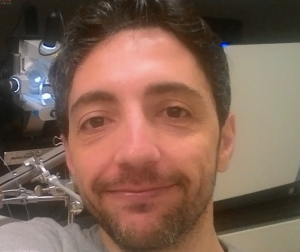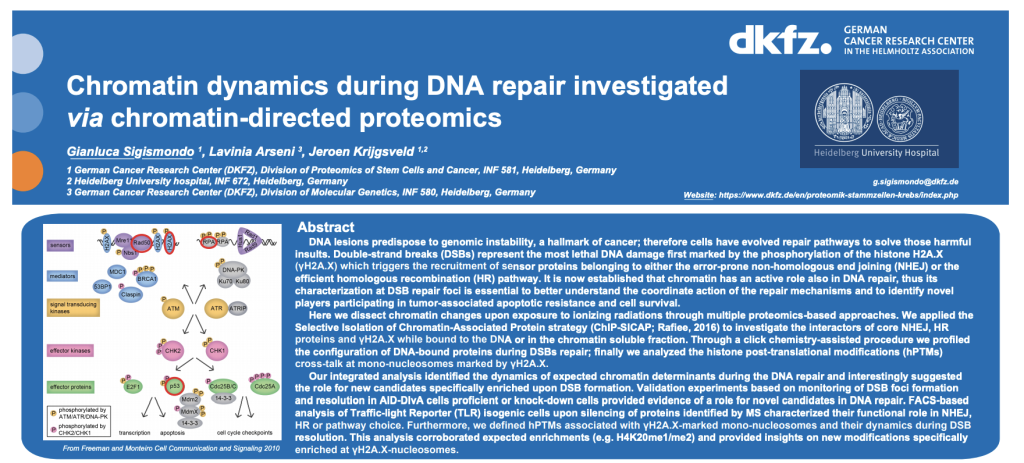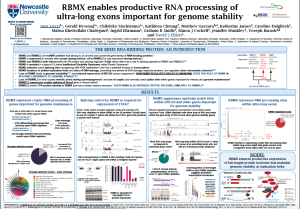Best Poster Awards: Friend or Foe — Transcription and RNA Meet DNA Replication and Repair
During the second virtual EMBO | EMBL Symposium of the year three scientists were awarded a prize for their scientific poster. In this blog, we present the winners and their research.
Friend or Foe attracted 336 participants worldwide, discussing transcription and RNA and DNA replication and repair in live sessions and panel discussions. Three poster session rounds gave the opportunity for participants to view 72 digital posters and interact with the poster presenters.
After the sessions, a voting round followed and three presenters were distinguished with a best poster award by popular vote.
- Gianluca Sigismondo of the German Cancer Research Center in Heidelberg, Germany.
- Tycho Mevissen, Howard Hughes Medical Institute and Harvard Medical School, USA
- Sara Luzzi, Newcastle University, UK
Read our blog on how to create a prize-winning digital poster.
Chromatin dynamics during DNA repair investigated via chromatin-directed proteomics

Poster presenter: Gianluca Sigismondo
Authors: Gianluca Sigismondo, Lavinia Arseni, Jeroen Krijgsveld
DNA lesions predispose to genomic instability, a hallmark of cancer; therefore cells have evolved repair pathways to solve those harmful insults.
Double-strand breaks (DSBs) represent the most lethal DNA damage first marked by the phosphorylation of the histone H2A.X (γH2A.X) which triggers the recruitment of sensor proteins belonging to either the error-prone non-homologous end joining (NHEJ) or the efficient homologous recombination (HR) pathway.
It is now established that chromatin has an active role also in DNA repair, thus its characterization at DSB repair foci is essential to better understand the coordinate action of the repair mechanisms and to identify novel players participating in tumor-associated apoptotic resistance and cell survival.
Here we dissect chromatin changes upon exposure to ionizing radiations through multiple proteomics-based approaches. We applied the Selective Isolation of Chromatin-Associated Protein strategy (ChIP-SICAP; Rafiee, 2016) to investigate the interactors of core NHEJ, HR proteins and γH2A.X while bound to the DNA or in the chromatin soluble fraction.
Through a click chemistry-assisted procedure we profiled the configuration of DNA-bound proteins during DSBs repair; finally we analyzed the histone post-translational modifications (hPTMs) cross-talk at mono-nucleosomes marked by γH2A.X.
Our integrated analysis identified the dynamics of expected chromatin determinants during the DNA repair and interestingly suggested the role for new candidates specifically enriched upon DSB formation.
Validation experiments based on monitoring of DSB foci formation and resolution in AID-DIvA cells proficient or knock-down cells provided evidence of a role for novel candidates in DNA repair. FACS-based analysis of Traffic-light Reporter (TLR) isogenic cells upon silencing of proteins identified by MS characterized their functional role in NHEJ, HR or pathway choice. Furthermore, we defined hPTMs associated with γH2A.X-marked mono-nucleosomes and their dynamics during DSB resolution.
This analysis corroborated expected enrichments (e.g. H4K20me1/me2) and provided insights on new modifications specifically enriched at γH2A.X-nucleosomes.

Towards transcription-coupled DNA repair in Xenopus egg extract
Poster presenter: Tycho Mevissen

This poster and abstract contain unpublished data and are not available at this moment.
Tycho Mevissen is a postdoctoral research fellow in Johannes Walter’s lab at Harvard Medical School. He had completed his PhD with David Komander at the MRC Laboratory of Molecular Biology in Cambridge, UK, where he used structural and biochemical tools to elucidate the intricate mechanisms of enzymes in the ubiquitin system, in particular deubiquitinases (DUBs).
His current research interests in the Walter lab revolve around molecular mechanisms at the intersection of DNA transcription, replication and repair.
In particular, he is interested in understanding how elongating RNA polymerase II deals with various types of obstacles – including different DNA lesions – during transcription elongation. To study this, he uses Xenopus egg extract, which is a powerful cell-free system that has been successfully used to recapitulate a wide range of cellular DNA repair pathways.
RBMX enables productive RNA processing of ultra long exons important for genome stability

Poster presenter: Sara Luzzi
Authors: Sara Luzzi, Gerald Hysenaj, Chileleko Siachisumo, Kathleen Cheung, Matthew Gazzara, Katherine James, Caroline Dalgliesh, Mahsa Kheirollahi Chadegani, Ingrid Ehrmann, Graham R Smith, Simon J Cockell, Jennifer Munkley, Yoseph Barash, and David J Elliott.
The nuclear RNA binding protein RBMX has a direct role in genome repair and is required for expression of the tumour suppressor BRCA2. Here we report that RBMX controls RNA processing of key genes involved in genome maintenance in breast cancer cells.
Our data demonstrate that RBMX represses a premature polyadenylation site that would truncate BRCA2 protein, and is essential for full-length mRNA expression from other genes important for genome stability. These include ETAA1, which encodes for a key replication fork protein, where RBMX and its protein interaction partner Tra2ß efficiently suppress a weak splice site to enable ETAA1 protein expression.
More generally, we propose that RBMX facilitates correct inclusion of unusually long exons within mature mRNAs by repressing cryptic RNA processing. Our data provide new molecular insights explaining the role of RBMX in DNA repair and genome maintenance.
